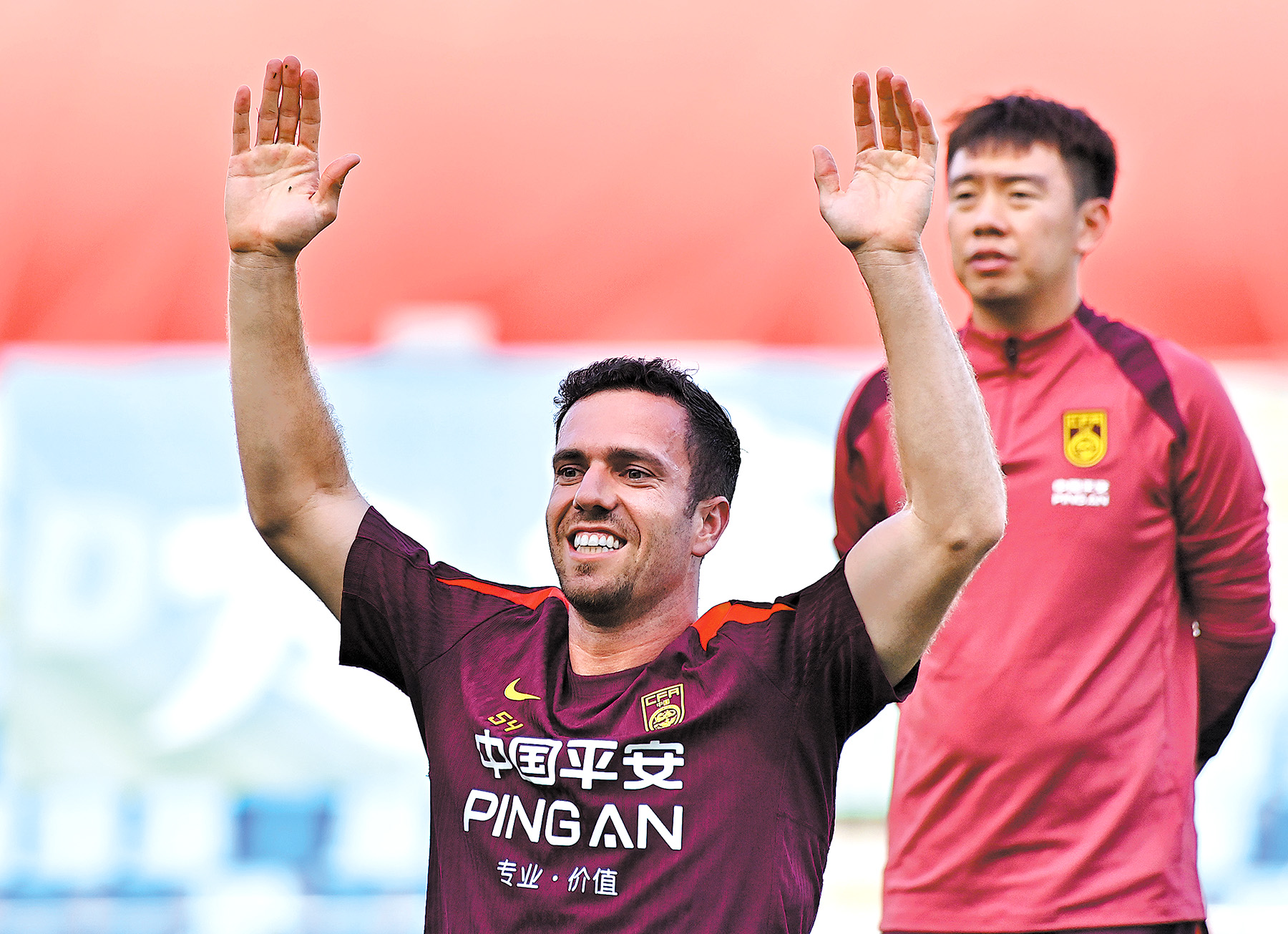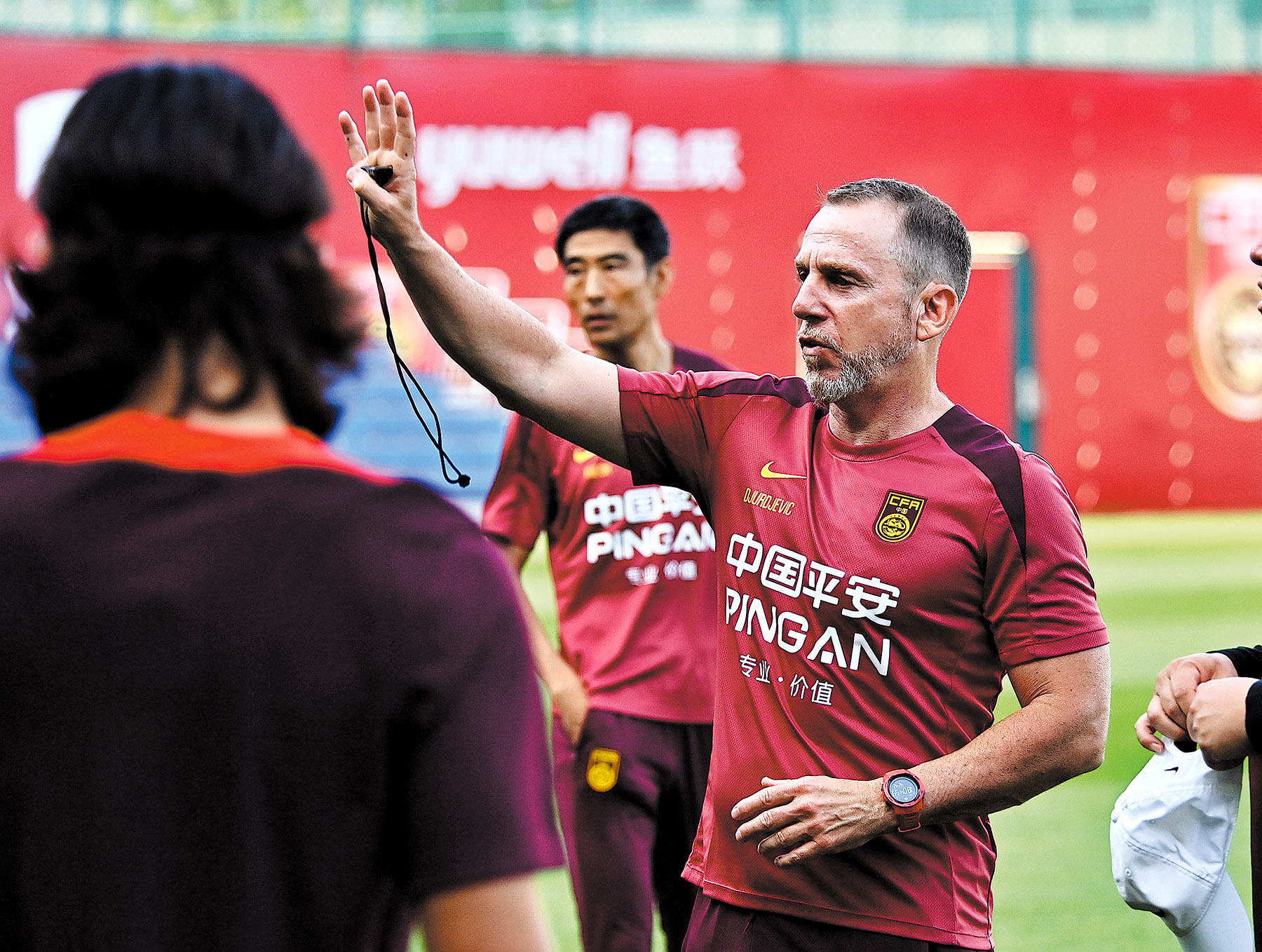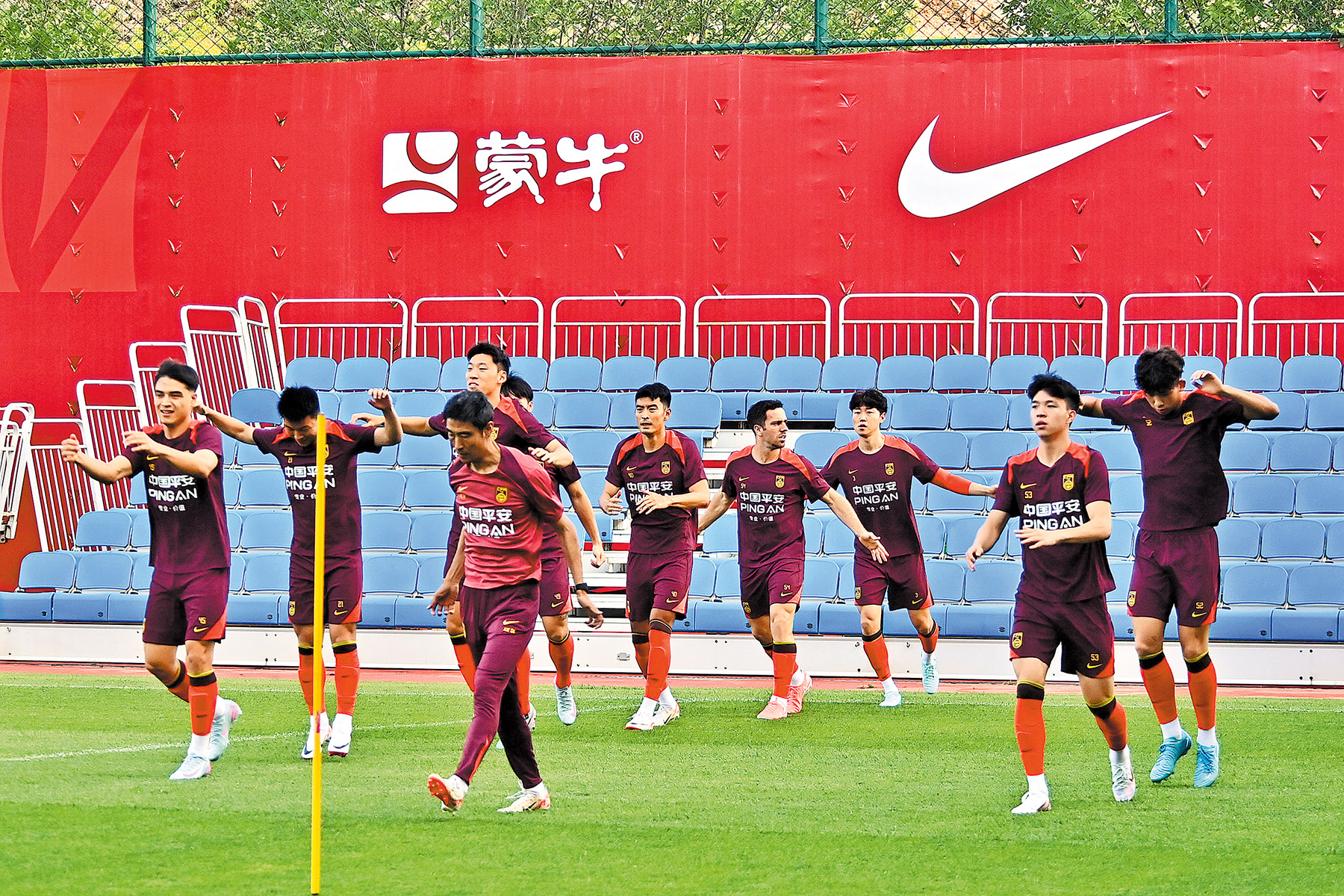Team China opts for youth under new boss to kick off long road to 2030 tournament

With its 2026 FIFA World Cup hopes officially dashed, China’s men’s national team is turning the page — and looking ahead. A new generation of players is setting its sights on a longer-term goal: making it to the 2030 tournament.
The journey began in earnest this week at the East Asian Cup in South Korea, where a youthful Chinese squad made its first appearance under new interim leadership — a symbolic fresh start for a team eager to move past its most recent disappointment.
The national team began training on July 2 at the Dalian Football Youth Training Base in Liaoning province ahead of a 3-0 defeat to host South Korea in the tournament opener on July 7. The new chapter also includes games against Japan on July 12 and Hong Kong on July 15.
At the helm of this new era is Dejan Djurdjevic, who was appointed interim head coach on June 27, just days before training began.
Despite the tight timeline, Djurdjevic — a familiar figure within the Chinese soccer system — exuded quiet confidence.
“We do not need to fear the opponents,” he said, underscoring a shift in mentality that may define this new cycle.
Djurdjevic brings with him not just experience, but continuity.
He previously coached China’s U19 team and the U20 Asian Games squad, the pathway along which many of the current players traveled to reach the senior setup.
“Many players here are ones I’ve coached before,” Djurdjevic said. “Having led age-grade national teams and consistently watched the Chinese Super League, the players are well-known to me.”

That familiarity shaped his early approach. With just three days of training in Dalian before the team departed for South Korea on July 5, Djurdjevic had to quickly mold the newly assembled squad into a cohesive unit.
“Our preparation window is extremely short,” Djurdjevic noted. “Our focus is to maximize players’ readiness and to efficiently instill our tactical approach. Facing strong opponents demands 100 percent focus from the start.”
Ten of the 26 players selected for the tournament previously trained under him — a critical overlap that could help accelerate team chemistry in a compressed timeframe.
One such player is midfielder Gao Tianyi of Shanghai Shenhua, who praised the coach’s clarity and adaptability.
“Having worked together before, I know his style and approach well, and I fully trust him,” Gao said. “He tailors tactics to fit the specific characteristics of the players. I believe that, under his leadership, we will see a new chapter for Chinese football.”
The 26-man roster announced by the Chinese Football Association on June 30 reflects a clear shift toward youth. Only four players are the age of 30 — one of whom is Brazilian-born Serghino, or Sai Erjiniao as he is known in China. He is also the only naturalized player named in the squad.
With an average age of 25.4, nearly half the squad is composed of players born after the year 2000 — a sign of long-term planning for the 2030 World Cup cycle.
“The selection process was relatively straightforward,” Djurdjevic explained. “We chose players from an existing pool who fit our tactics and are in good form.
“After the setback of the World Cup qualifiers, this marks a fresh start. The door to the national team remains open; new talent will emerge based on performance.”

Among the most notable changes is the goalkeeping roster. Veteran Yan Junling remains the mainstay, but two fresh faces join him: Yu Jinyong of Shandong Taishan and Xue Qinghao of Shanghai Shenhua.
Yu, in particular, has made headlines this season. Thrown into action during Shandong’s season opener after starter Wang Dalei was sent off, the young keeper delivered five spectacular saves in 67 minutes to secure the Man of the Match honor.
Though he has made only three senior club appearances in this season, his standout showings with the U21 national team have earned him a senior call-up.
There are also midfield reinforcements in the form of two debutants: 19-year-old Kuai Jiwen from Shanghai Port and 25-year-old Liao Jintao from Dalian Yingbo.
Both are considered rising stars in the domestic league and are joined by returning veterans Xu Xin, Ba Dun, and Gao.
“I’m very happy to be selected,” said Kuai. “It’s a great chance to learn from the senior players. I’m gradually adapting to the league level, but still, there’s much to improve.”
In contrast to the 2022 East Asian Cup — where China finished third under former head coach Aleksandar Jankovic — this year’s campaign carries different weight.
While results still matter, the tournament is seen primarily as a proving ground for the national team’s next core.
Under Djurdjevic’s direction, this blend of rising stars and seasoned players represents more than a squad — it signals the start of a new era.
The road to 2030 does not start in the spotlight of World Cup qualifying games. It started here: on the training pitches of Dalian and the stadiums of South Korea, where China’s next generation began its journey to reach soccer’s promised land.
Jiang Xinyu contributed to this story.
Contact the writer at liyingxue@chinadaily.com.cn


